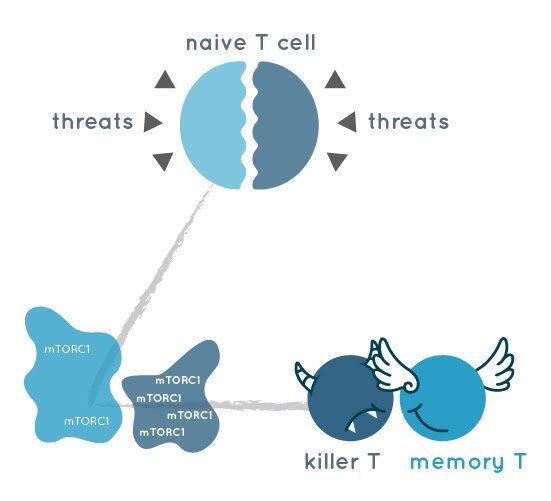2017-04-01
Different from symmetric cell division will produce two totally same daughter cells with mother cell, asymmetric cell division will produce two unlike daughter cells with different destiny.
To a great extend, asymmetric cell division is a highly conserved evolution mechanism, and often occur in the stem cell differentiation and immune system.
Existing research shows that asymmetric cell division produces t-cell precursors containing different amount of CD8 performance, and then respectively formed killer T cells and memory T cells.

But what mechanisms make the T daughter cells after asymmetric cell division have a different fate?
Powell, a team composed of professors, in June 2016, published a research report in Nature Immunology shows that the key point that decide the fate of T daughter cells is at the first T mother cells split and attacked by foreign antigens, one of the daughter T cell will receive more amounts of mTORC1 than the other. The non average distribution of mTORC1 phenomenon seems to restructure the metabolic activity of T cells, high metabolism of T daughter cells formed killer T cells in the immune system, while a low metabolism of T cells formed memory T cells with longer life, and in the second invasion by antigen can quickly give a proper immune response.
The asymmetric cell division mechanism caused uneven distribution of mTORC1 may also exist in other cells in different systems, which provides us a new Angle of view to study the stem cells or cancer immunotherapy.